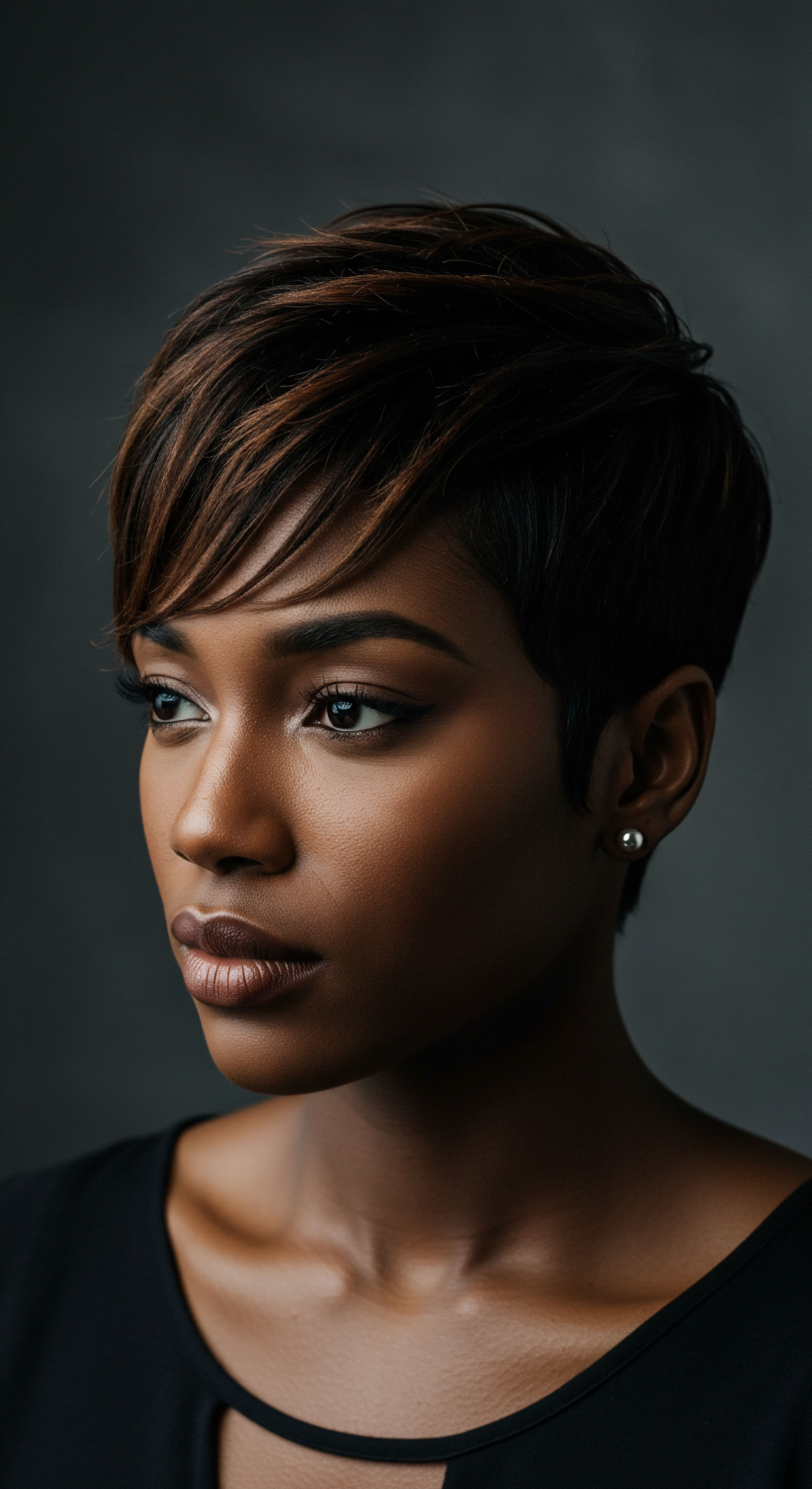
Roots
The sun-drenched lands of ancient Kemet, now known as Egypt, held secrets not only of grand pyramids and intricate hieroglyphs but also of a profound connection to self-care, particularly concerning the scalp and hair. For royalty, the care of one’s crowning glory was not merely a superficial pursuit; it was deeply interwoven with notions of purity, social standing, spiritual alignment, and even the very concept of eternal life. A vibrant, well-maintained scalp was a testament to health, vitality, and a connection to the divine order, reflecting the meticulous attention paid to the body as a vessel for the spirit. The desert environment, with its arid winds and pervasive sand, presented unique challenges to hair and scalp health, prompting the development of sophisticated practices and potent remedies.
Consider for a moment the enduring images we hold of Egyptian pharaohs and queens ❉ often depicted with lustrous, dark hair, sometimes their own, often elaborate wigs. These representations speak volumes about the societal value placed on a healthy appearance, extending right down to the scalp beneath. Their understanding of hair’s fundamental needs, though without the modern scientific vocabulary, was remarkably intuitive, rooted in observations of natural ingredients and their effects. They grasped the importance of a clean environment for the hair follicle and sought to create conditions conducive to growth and vitality.
Ancient Egyptian royalty viewed scalp health as a reflection of purity, status, and spiritual connection, leading to meticulous care practices.
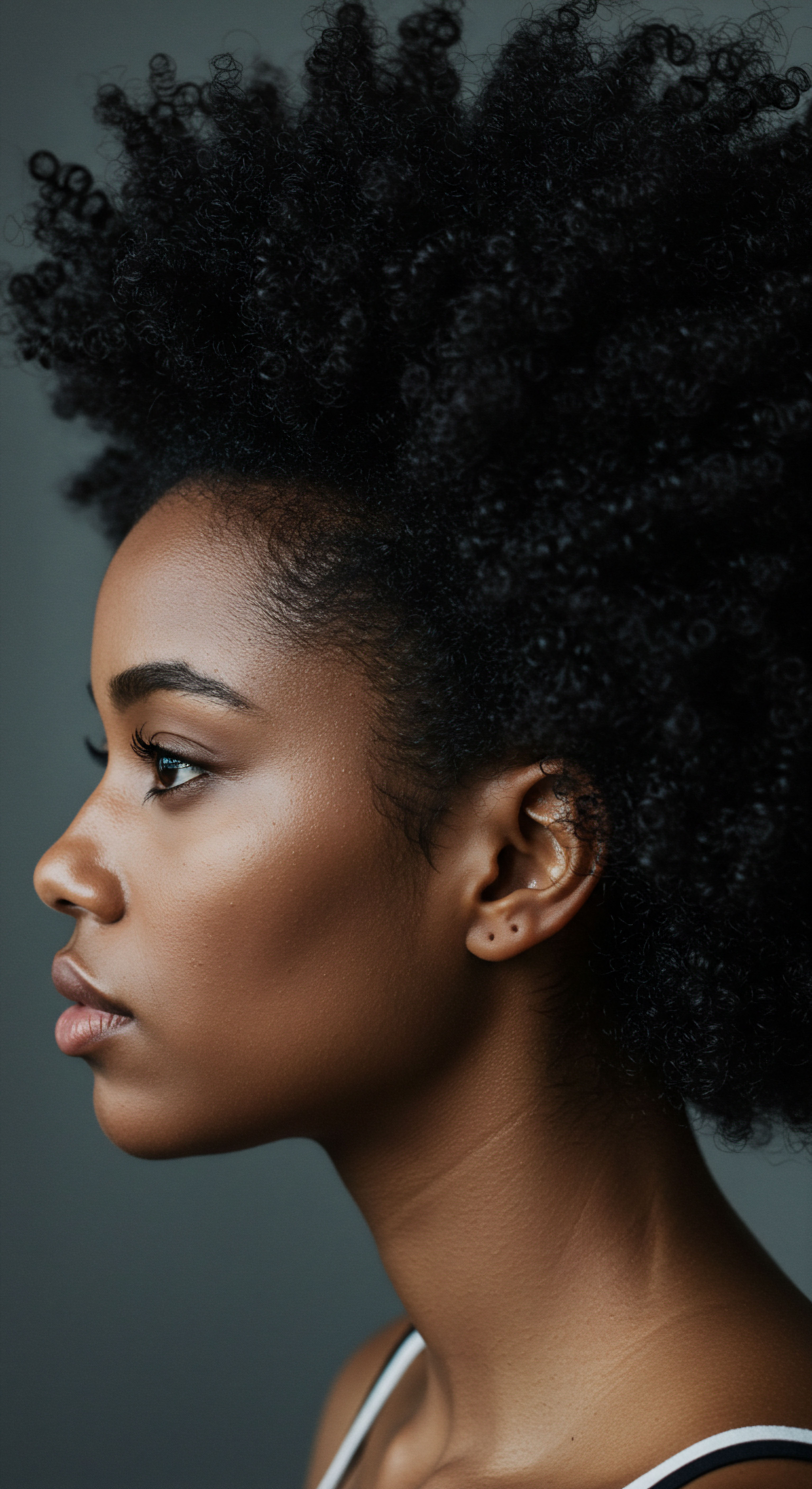
Hair and Scalp as Symbols of Divinity and Status
In ancient Egypt, hair was far more than just a physical attribute; it was a potent symbol. For royalty, it signified divine favor and earthly power. The meticulous care of their hair and scalp underscored their elevated position, distinguishing them from commoners. Shaving the head was a common practice for many Egyptians, particularly priests, for reasons of hygiene and ritual purity.
However, royalty and the elite often wore elaborate wigs, which were themselves symbols of wealth and status. These wigs, crafted from human hair and sometimes plant fibers, required their own intricate cleaning and conditioning, reflecting the wearer’s dedication to an impeccable presentation. The underlying scalp, whether covered by a wig or adorned with natural hair, still required diligent attention to maintain its health and comfort in the warm climate.
The concept of personal hygiene was paramount, with records suggesting daily washing rituals for the upper classes. This dedication to cleanliness extended to the scalp, aiming to prevent common issues like lice and other discomforts in the desert heat. The ideal scalp was a clean, soothed canvas, ready to support the beautiful hair or wig that completed the royal visage.

Early Understandings of Scalp Physiology
While ancient Egyptians lacked microscopes or a molecular understanding of cellular biology, their practical observations of the human body were remarkably keen. They understood that the scalp, as the foundation for hair, required specific care to remain healthy. Medical papyri, such as the Ebers Papyrus, dating back to around 1550 B.C.
contain remedies for various medical issues, including those related to hair loss and scalp conditions. These texts, though written in a language of symptoms and natural remedies, demonstrate a clear recognition of scalp ailments and the desire to alleviate them.
Their understanding of hair growth cycles, while not formalized in a modern sense, was evident in their treatments for baldness. They believed in stimulating the scalp to encourage new growth, employing various concoctions with ingredients thought to possess restorative properties. The focus was on external application, recognizing the direct link between what was applied to the scalp and the health of the hair emerging from it.

Botanical and Animal Ingredients for Scalp Nourishment
The Egyptian landscape, though seemingly barren in parts, provided a wealth of natural resources for their cosmetic and medicinal preparations. For scalp health, they turned to a variety of oils, fats, and botanical extracts. These were chosen for their perceived moisturizing, soothing, and protective qualities.
- Castor Oil ❉ A staple in ancient Egyptian hair care routines, prized for its moisturizing properties and believed to condition and strengthen hair. It was often mixed with honey and herbs to create masks that promoted growth and shine.
- Almond Oil ❉ Applied to keep hair silky smooth and also thought to aid in managing lice.
- Olive Oil ❉ Used for its nourishing and strengthening properties, often infused with herbs.
- Animal Fats ❉ Mixtures of fats from animals like hippopotamus, crocodile, lion, snake, cat, and ibex were documented in the Ebers Papyrus as remedies for hair loss and baldness. While this may seem unusual to modern sensibilities, these fats would have provided a rich emollient base.
- Resins and Gums ❉ Frankincense, myrrh, and pine pitch were incorporated into balms, offering not only fragrance but also potentially antimicrobial properties.
These ingredients were not merely for aesthetic purposes; they served a practical role in protecting the scalp from the harsh desert environment, preventing dryness, and alleviating irritation. The systematic collection and preparation of these natural resources speak to a foundational knowledge of how elements from their surroundings could support physiological well-being.
The meticulous preparation of these compounds, often involving grinding, mixing, and heating, suggests a sophisticated understanding of material properties, even without modern chemical analysis. They sought to extract the most potent elements from their natural world to serve the body’s needs, recognizing the scalp as a living tissue requiring sustained care.
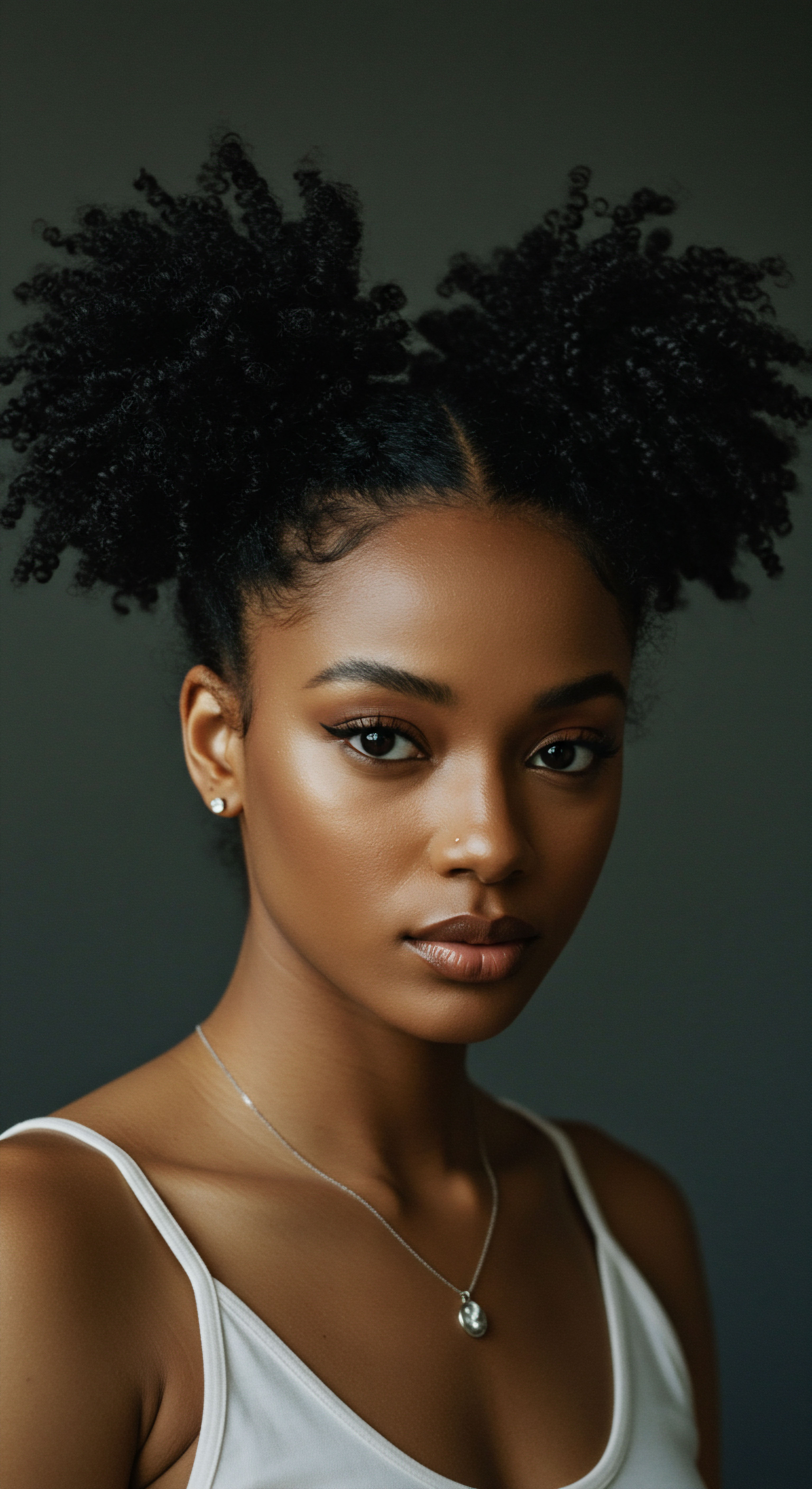
Ritual
Stepping into the daily lives of ancient Egyptian royalty reveals a world where personal care was a series of deliberate, almost ceremonial actions, especially when it came to the scalp and hair. It wasn’t about a quick wash and go; rather, it involved a thoughtful sequence of cleansing, anointing, and styling, each step designed to contribute to overall well-being and a regal appearance. This segment of their lives was not merely about maintaining hygiene; it was about cultivating a presence, a visual and sensory expression of their elevated state. Their practical wisdom, honed over centuries, manifested in tangible routines that, while ancient, resonate with timeless principles of care.
The techniques employed by the royal court were refined, often involving the assistance of skilled attendants and the use of specialized tools. The focus was on creating a soothing, protective environment for the scalp, allowing the hair to thrive or the wig to sit comfortably and elegantly. The rhythmic application of oils, the careful detangling, and the elaborate styling were all part of a continuum of care that upheld both physical comfort and societal expectations.
Royal Egyptian hair and scalp care was a meticulous, multi-step process combining cleansing, oiling, and styling, reflecting a deep commitment to personal presentation and comfort.
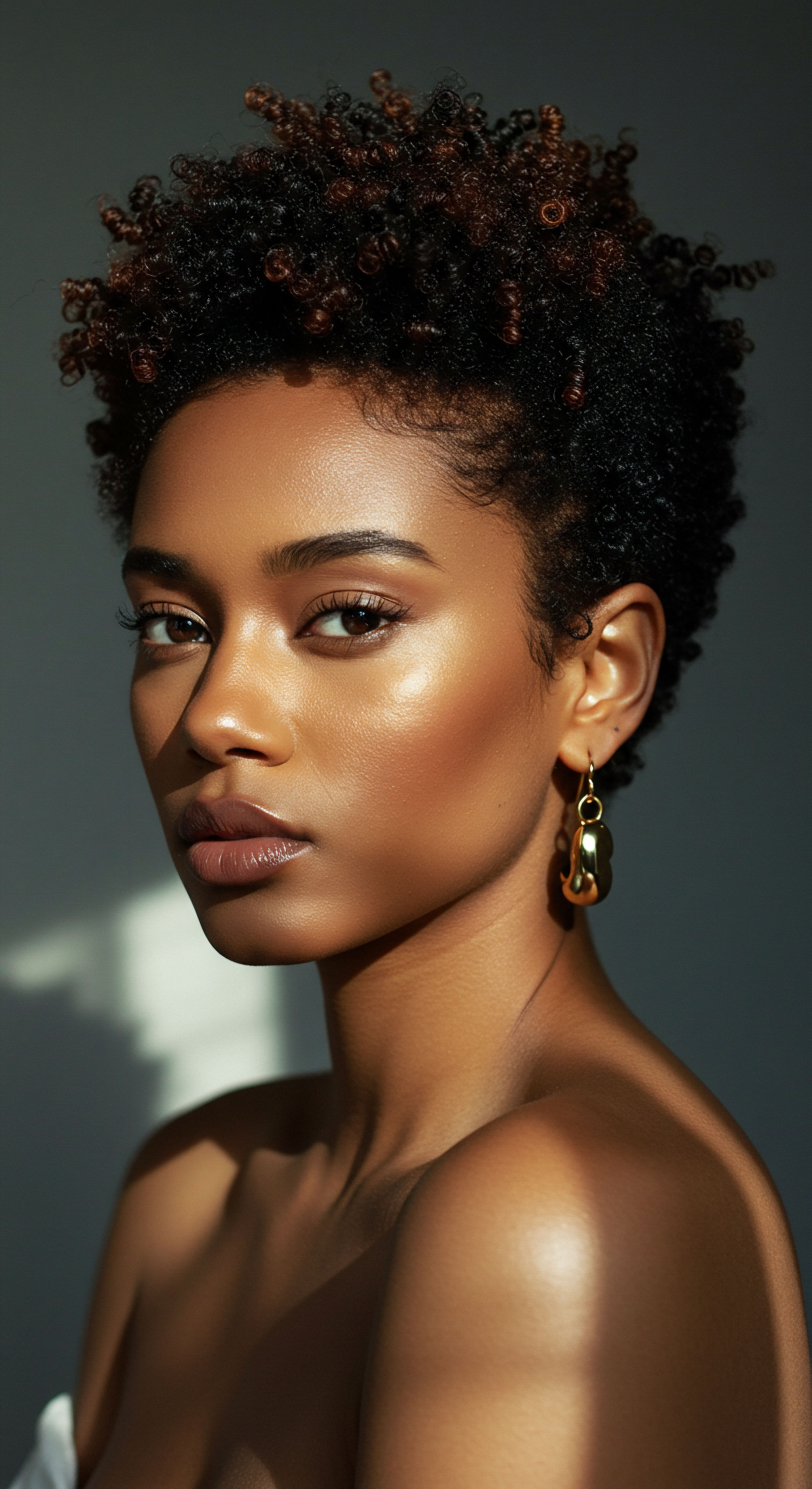
Cleansing Practices and Scalp Hygiene
Maintaining cleanliness in a hot, dusty climate was a constant challenge, yet ancient Egyptians were known for their high standards of personal hygiene. For the royalty, this meant regular bathing, often in the Nile, and the use of early forms of cleansers. While they did not have modern shampoos, they employed substances that served a similar purpose.
- Clay and Water ❉ Clay was a natural cleanser, used to remove dirt and impurities from the hair and scalp without stripping natural oils. This method would have been gentle, respecting the scalp’s delicate balance.
- Aromatic Waters ❉ Infused waters, possibly with plant extracts, would have been used for rinsing, leaving a subtle, refreshing scent.
- Shaving ❉ For many, including priests and sometimes royalty, shaving the head was a practical solution for hygiene, particularly to combat lice. Wigs then provided both protection from the sun and a means of elaborate styling. This practice speaks to a pragmatic approach to maintaining scalp cleanliness in a time without readily available deep-cleansing agents.
The emphasis on cleanliness was not merely aesthetic; it was also linked to health. Medical papyri contained remedies for scalp ailments, underscoring the understanding that a clean scalp was a healthy scalp. The regular removal of dirt, sweat, and environmental debris was a foundational step in their comprehensive care regimen.
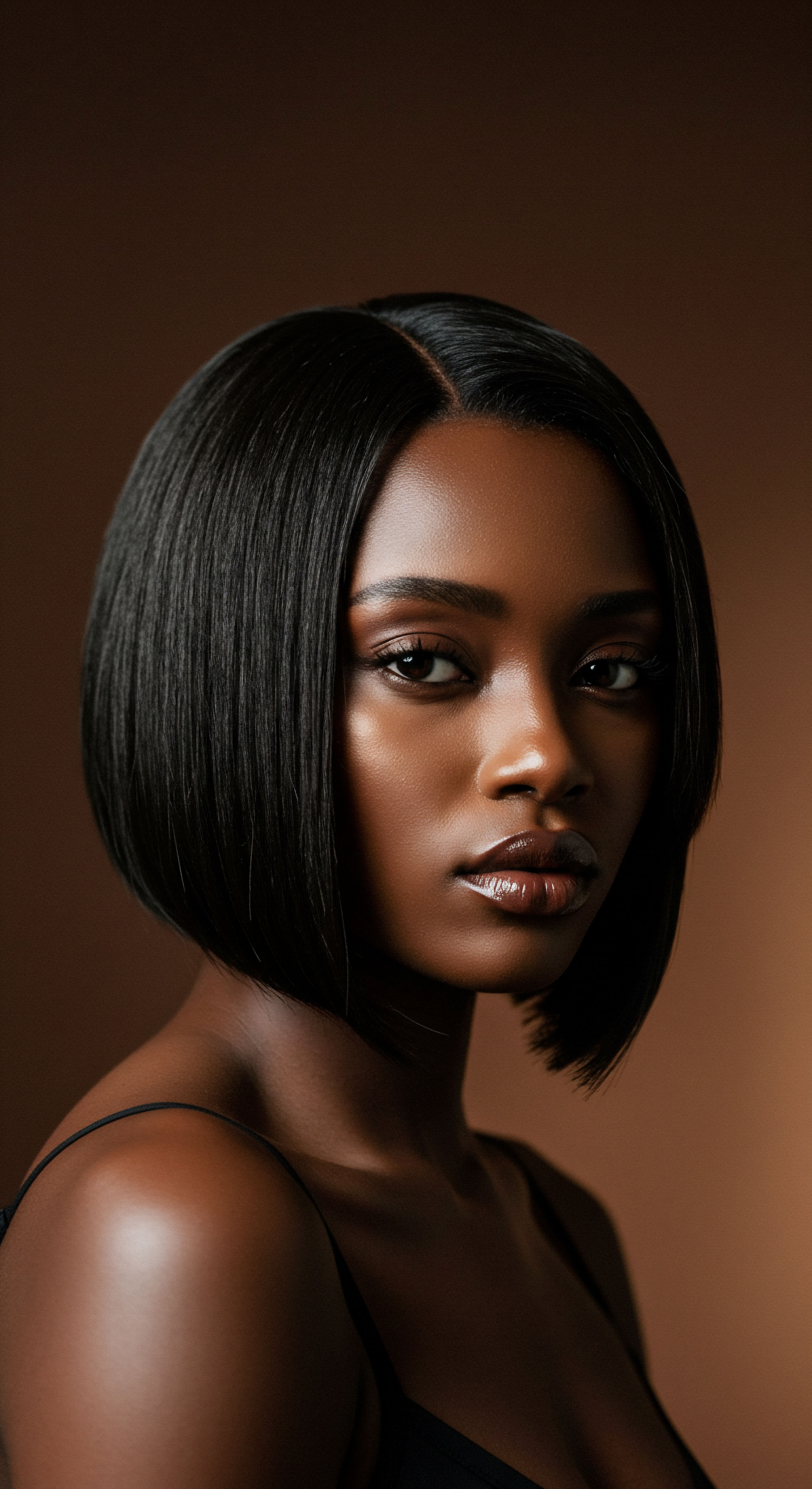
Anointing and Conditioning Rituals
Once cleansed, the scalp and hair were generously anointed with various oils and balms. This step was crucial for moisturizing, conditioning, and protecting against the dry air. These applications were often accompanied by scalp massages, a practice recognized even then for its ability to promote circulation and potentially stimulate hair growth.
The specific blends used by royalty were likely more luxurious, incorporating rare resins and fragrant oils obtained through trade. These were not just emollients; they were also considered perfumes, leaving the wearer with a pleasant, lasting scent.
| Ingredient Castor Oil |
| Primary Benefit for Scalp/Hair Moisturizing, strengthening, shine |
| Historical Source Ebers Papyrus, archaeological findings |
| Ingredient Almond Oil |
| Primary Benefit for Scalp/Hair Smoothing, conditioning, lice management |
| Historical Source Archaeological findings |
| Ingredient Honey |
| Primary Benefit for Scalp/Hair Moisturizing, shine, antiseptic qualities |
| Historical Source Medical papyri, cosmetic recipes |
| Ingredient Animal Fats (e.g. Hippopotamus, Crocodile) |
| Primary Benefit for Scalp/Hair Hair growth remedies, emollient base |
| Historical Source Ebers Papyrus, Hearst Papyrus |
| Ingredient Henna |
| Primary Benefit for Scalp/Hair Hair dye, strengthening, conditioning |
| Historical Source Archaeological findings, cosmetic recipes |
| Ingredient Various Resins (e.g. Myrrh, Frankincense) |
| Primary Benefit for Scalp/Hair Fragrance, potential antimicrobial properties, styling fixative |
| Historical Source Mummification balms, cosmetic recipes |
The application of these substances was often quite elaborate. They were likely warmed to allow for better absorption and spread, and applied with care to ensure even distribution across the scalp and hair strands. This ritualistic approach underscored the value placed on the appearance and comfort of the royal individual.
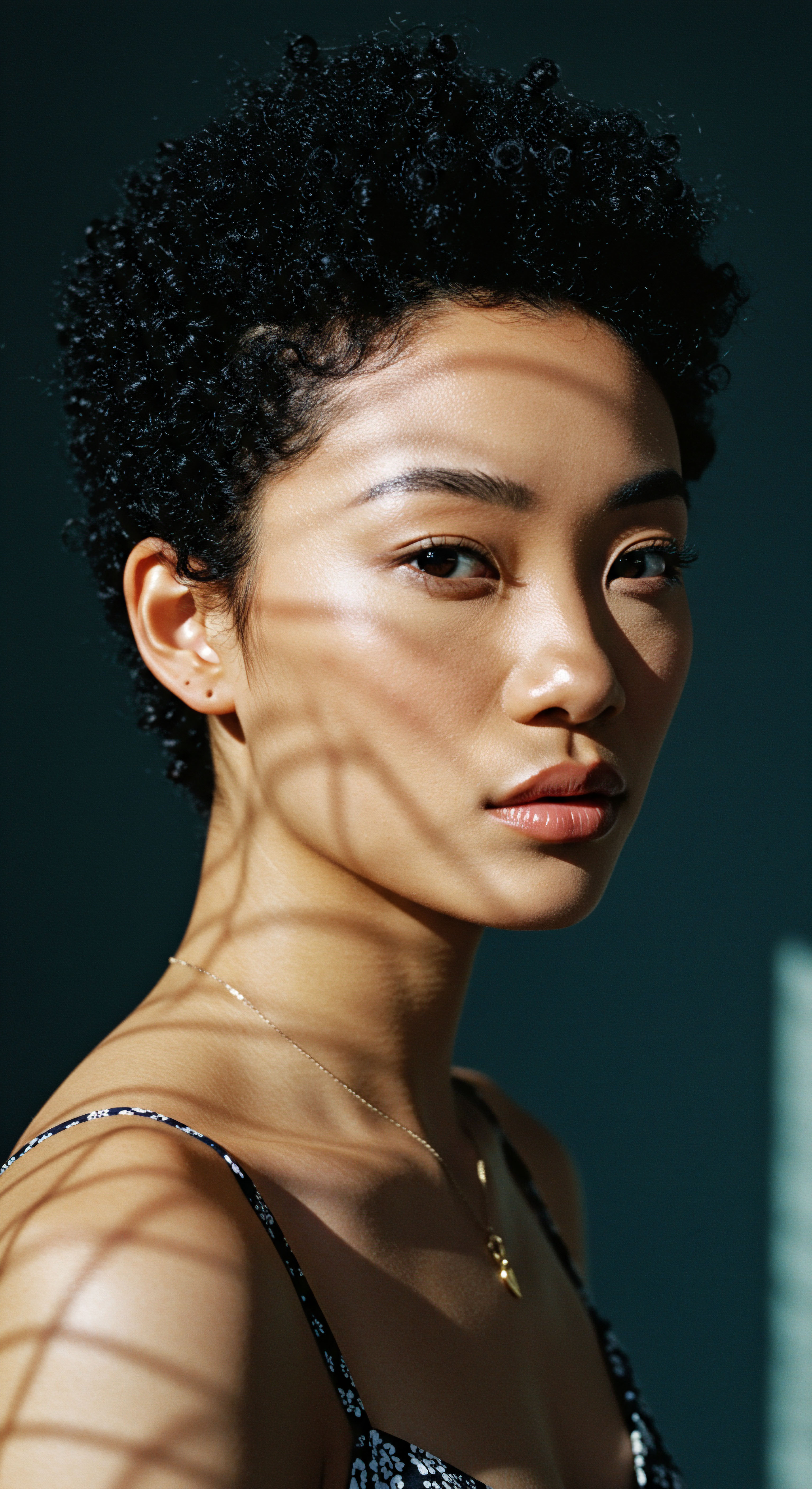
Styling and Wig Maintenance
For royalty, styling was an art form, whether it involved their natural hair or the ubiquitous wigs. Wigs were not only fashion statements but also practical tools for protection from the sun and a means to manage hair hygiene.
The maintenance of these wigs was a significant undertaking. They were cleaned, re-styled, and often treated with the same oils and resins used on natural hair to maintain their sheen and structure. Beeswax and resin were used as early forms of styling products to set elaborate coiffures and provide a lustrous finish.
Royal hairdressers and barbers were highly regarded professionals, entrusted with the personal appearance of the elite. Their skills extended beyond mere cutting and styling; they were adept at applying the various oils, balms, and even rudimentary hair dyes like henna. This professional attention ensured that the royal head, whether natural or adorned with a wig, consistently met the exacting standards of the court.
The tools of their trade included combs made from wood, ivory, or even fish bones, used for detangling and applying products. Fine-toothed combs were also employed, indicating an awareness of and efforts to remove common scalp parasites. The presence of these tools in archaeological findings further highlights the deliberate and systematic approach to scalp and hair care within the royal sphere.

How Did Royal Practices Differ From Commoners?
While the fundamental principles of hygiene and care were understood across society, the sheer opulence and consistency of royal practices set them apart. Commoners likely relied on simpler, more accessible ingredients and less frequent care. Royalty had access to imported resins, rare oils, and the dedicated time and personnel required for elaborate routines.
Their ability to shave their heads and wear wigs, which required significant resources to produce and maintain, was a clear marker of their social standing. The quality of their tools, the variety of their ingredients, and the presence of professional attendants all contributed to a level of scalp and hair maintenance unattainable by the general populace.

Relay
To truly appreciate the ancient Egyptian royal approach to scalp health, one must move beyond the surface-level descriptions of oils and combs and delve into the intricate interplay of their scientific observations, cultural beliefs, and the very real challenges of their environment. This was not a realm of simple vanity, but a complex tapestry woven from empirical knowledge, symbolic meaning, and a relentless pursuit of bodily perfection that extended even into the afterlife. The nuances of their practices, often surprising to the modern mind, reveal a sophisticated, if sometimes unorthodox, understanding of well-being. We can gain a deeper insight by considering how their perceptions of health and beauty were shaped by the tangible realities of their existence, sometimes leading to outcomes that challenge our idealized visions.
Consider, for example, the pervasive presence of certain health issues that, despite their meticulous care, affected even the highest echelons of society. The study of mummified remains offers a unique, albeit sometimes stark, window into these realities, providing data points that can reshape our understanding of ancient royal life. These insights, gleaned from the very physical evidence of their existence, underscore the persistent challenges they faced and the sometimes-unintended consequences of their beauty pursuits.
Ancient Egyptian royal scalp care involved a complex blend of empirical knowledge, cultural symbolism, and practical responses to environmental challenges, with mummified remains offering revealing insights into their health realities.
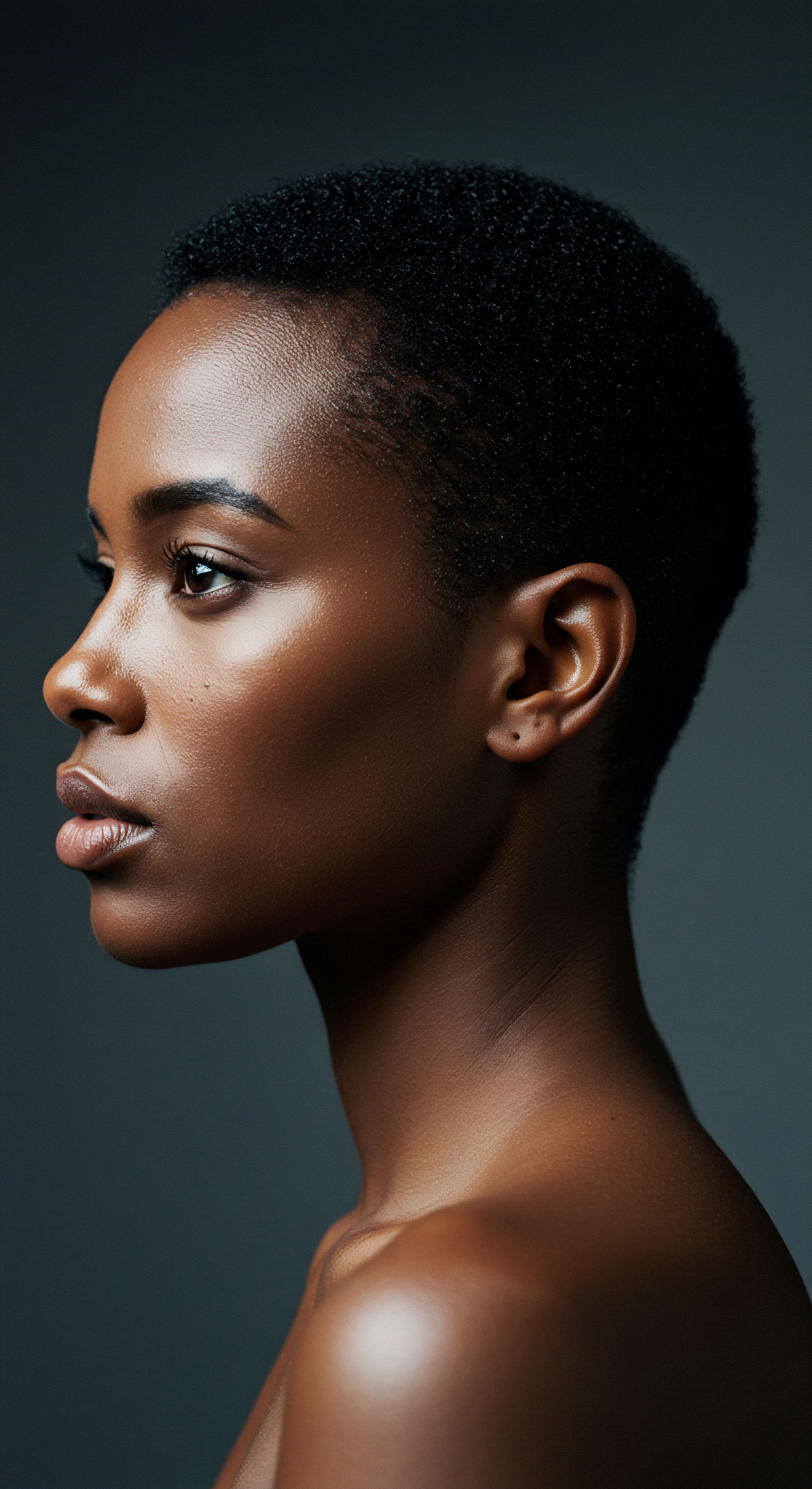
Scientific Insights from Ancient Practices
Modern scientific analysis of ancient Egyptian artifacts and mummified remains has begun to shed light on the chemical composition and efficacy of their hair and scalp preparations. The oils and resins identified in mummification balms, for instance, were not merely preservatives; many possessed properties beneficial for skin and hair.
- Antimicrobial Properties ❉ Ingredients like myrrh and frankincense resins, identified in embalming materials, possess known antimicrobial and anti-inflammatory properties. While primarily for preservation, their presence suggests an intuitive understanding of preventing decay and potentially soothing scalp conditions.
- Emollient Richness ❉ The fatty substances found coating mummy hair, interpreted as ancient hair gels or fixatives, were rich in long-chain fatty acids like palmitic and stearic acid. These would have provided significant moisture and protection, sealing the hair cuticle and preventing dryness, which is especially important for textured hair types prone to moisture loss.
- Castor Oil’s Role ❉ The pervasive use of castor oil, as seen in ancient recipes, is scientifically sound. Ricinoleic acid, a primary component of castor oil, is known for its anti-inflammatory and moisturizing properties, which could soothe irritated scalps and support healthy hair growth.
The presence of specific botanical oils, like Kalahari watermelon seed oil, oleaster oil, mongongo oil, and baobab oil, in modern formulations inspired by ancient Egyptian beauty secrets, suggests that these ancient ingredients, while perhaps not fully understood chemically at the time, were chosen for observable benefits. This highlights a sophisticated empirical process of trial and error over millennia.

The Unvarnished Truth Scalp Conditions in Royalty
Despite their elaborate rituals and access to unique remedies, ancient Egyptian royalty were not immune to common human afflictions. Archaeological studies of mummified remains have provided compelling, sometimes surprising, evidence of scalp conditions that affected even the most revered figures.
One particularly striking example is the prevalence of head lice. While images of royalty suggest pristine perfection, research indicates that lice were a widespread issue across ancient Egyptian society, including among the elite. Examinations of mummified hair have revealed the presence of lice eggs, or nits, firmly cemented to hair strands.
For instance, studies on mummified hair dating back thousands of years consistently report the presence of nits, underscoring that these tiny parasites were a persistent nuisance. This reality offers a counterpoint to the idealized depictions of ancient Egyptian beauty, reminding us of the biological challenges faced even by those with the highest status.
This persistent issue likely explains the common practice of shaving the head and wearing wigs. Wigs, besides being fashion statements and symbols of status, served a practical purpose in managing and containing lice infestations. If an infestation occurred, it was far simpler to remove and clean a wig than to treat natural hair.
The discovery of fine-toothed combs in archaeological sites, specifically designed for removing lice and nits, further corroborates the ongoing struggle with these parasites. This reveals a pragmatic response to a common health challenge, integrating it into their beauty and hygiene routines.

Toxic Beauty and Scalp Health
A more controversial aspect of ancient Egyptian beauty practices, though perhaps less directly related to scalp health but still relevant to overall integumentary system care, involves the use of potentially toxic substances in cosmetics. While kohl, a popular eye cosmetic, contained lead, modern research suggests that the specific lead compounds used by Egyptians might have had antibacterial properties when applied to the eyes, offering a protective benefit against infections.
However, other ingredients could pose risks. For instance, some hair removal creams reportedly contained combinations of arsenic and quicklime. Arsenic, a known poison, can cause skin irritation, blistering, and even hair loss with prolonged exposure. While primarily for depilation, the potential for these harsh chemicals to affect scalp health, particularly if used carelessly or frequently near the hairline, cannot be discounted.
A case study of a 3,500-year-old mummified woman’s head revealed signs of exogenous ochronosis, a skin disorder linked to the extensive use of skin-bleaching cosmetics, often containing lead. While this specifically refers to skin, it highlights the potential for harmful side effects from cosmetic ingredients on the broader integumentary system, including the scalp if similar compounds were applied. This offers a nuanced perspective on the lengths to which ancient royalty went for beauty, sometimes at a hidden cost to their health.
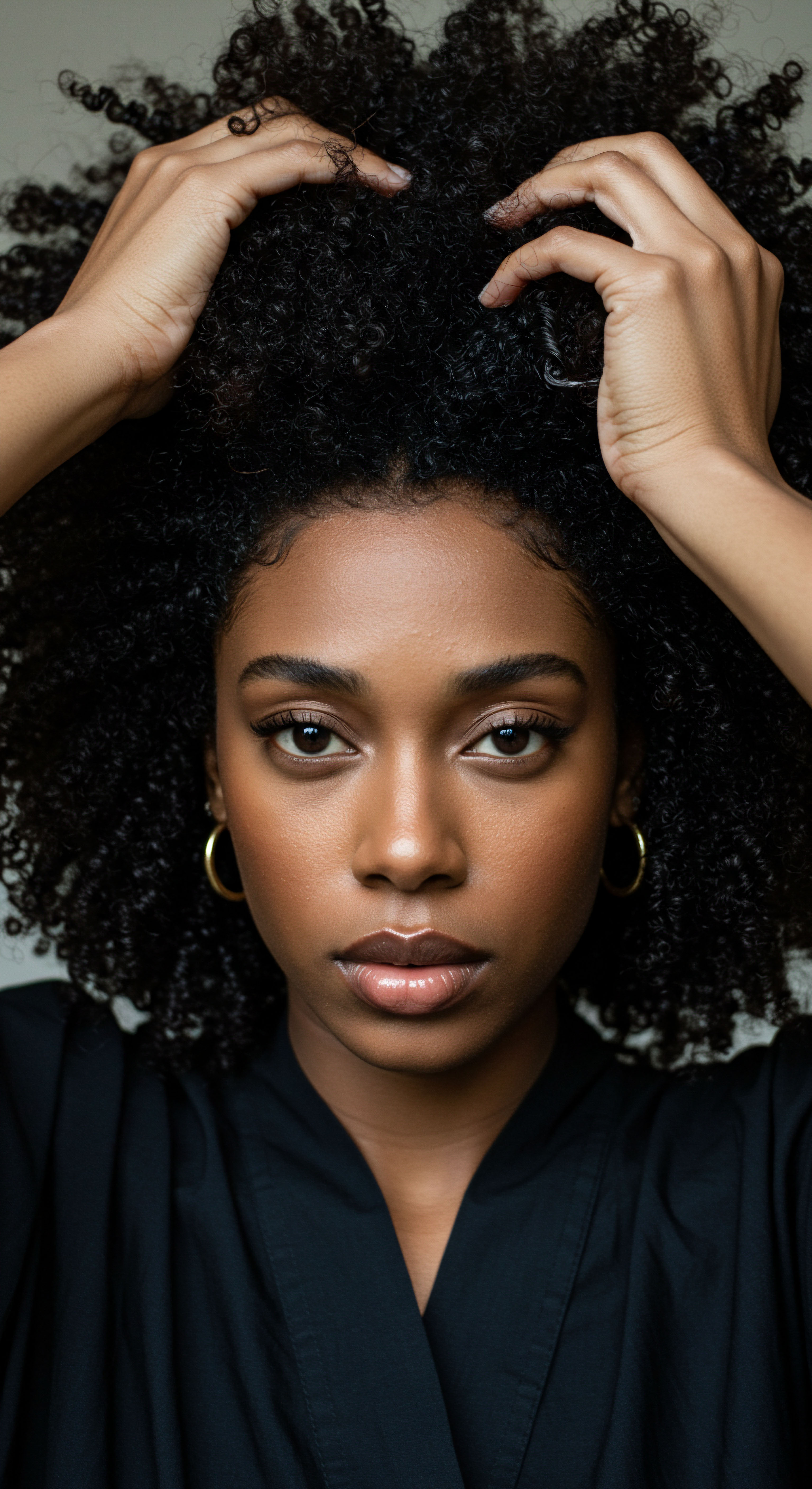
Cultural and Environmental Influences
The intense Egyptian sun and dry climate played a substantial role in shaping scalp care practices. The need for protection from UV radiation and moisture loss would have driven the widespread use of oils and fats. Wigs, often dense and dark, provided a layer of insulation against the sun’s direct rays, shielding the scalp from harsh exposure.
The cultural emphasis on a smooth, hairless body for hygiene and aesthetic reasons also influenced scalp practices. The act of shaving the head was deeply embedded in their understanding of purity and status. This cultural norm, combined with the practical challenges of managing natural hair in a hot climate and dealing with parasites, solidified the role of wigs and head shaving in royal routines.
The legacy of ancient Egyptian scalp care, therefore, extends beyond simple beauty. It represents a sophisticated, albeit sometimes risky, intersection of observed science, cultural imperatives, and environmental adaptation, all aimed at maintaining a regal and healthy appearance from head to toe.

Reflection
As we close this journey into the ancient world of Egyptian royal scalp care, a profound understanding begins to settle. It becomes clear that the pursuit of health and beauty, particularly concerning the delicate skin of the head, is a timeless endeavor, deeply rooted in human experience. The pharaohs and queens, with their elaborate wigs and precious oils, sought comfort, status, and a connection to something beyond the mundane, much like we do today in our own nuanced ways. Their methods, born of observation and ingenuity within the confines of their era, speak to a universal desire for well-being that resonates across millennia.
We find a quiet reassurance in recognizing that even the most exalted figures of history faced familiar challenges, adapting and innovating with the resources at hand. The whispers of their rituals echo in our modern understanding of hair and scalp wellness, reminding us that the principles of thoughtful care, gentle cleansing, and purposeful nourishment remain, in their essence, unchanged.
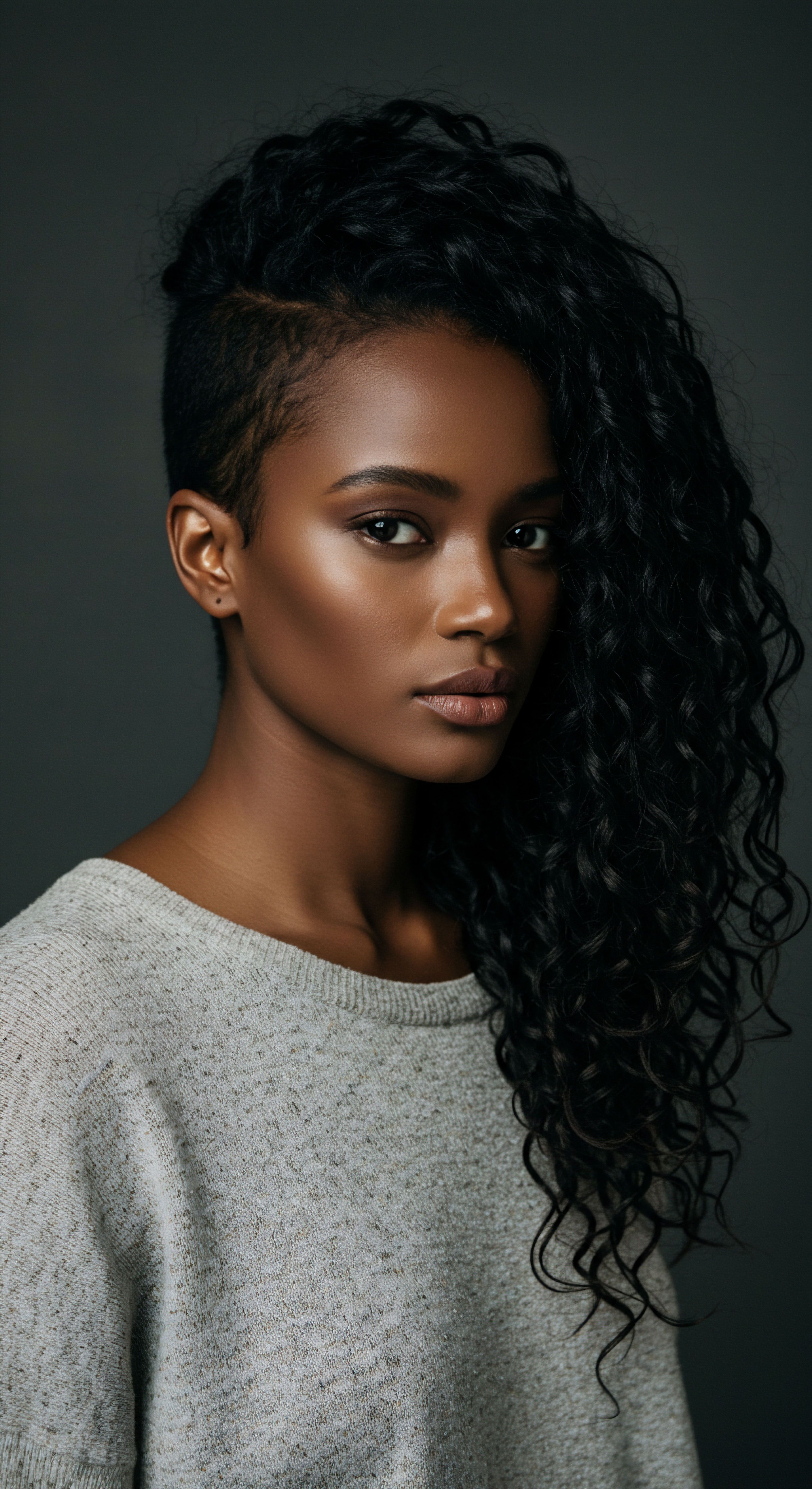
References
- Bryan, W. R. (1930). The Papyrus Ebers.
- Grapow, H. (1958). Grundriss der Medizin der Alten Ägypter V.
- Kamal, H. (1991). The Ancient Egyptian Medicine.
- Lucas, A. (1926). Ancient Egyptian Materials and Industries. Edward Arnold & Co.
- McCreesh, N. C. et al. (2011). An Integrated Study of the Hair Coating of Ancient Egyptian Mummies. Journal of Archaeological Science, 38(12), 3432-3434.
- Moissidou, D. et al. (2016). Egyptian mummified head bears traces of dermatosis linked with skin bleaching cosmetics. International Conference of Comparative Mummy Studies.
- Perotti, A. et al. (2022). DNA from louse cement reveals human migrations. Molecular Biology and Evolution, 39(8), msac154.
- Rapp, G. (2009). Archaeomineralogy. Springer.
- Robins, G. (1994). Proportion and Style in Ancient Egyptian Art. University of Texas Press.
- Tassie, G. J. (2014). The Social and Economic Aspects of Hair in Ancient Egypt. British Archaeological Reports International Series.